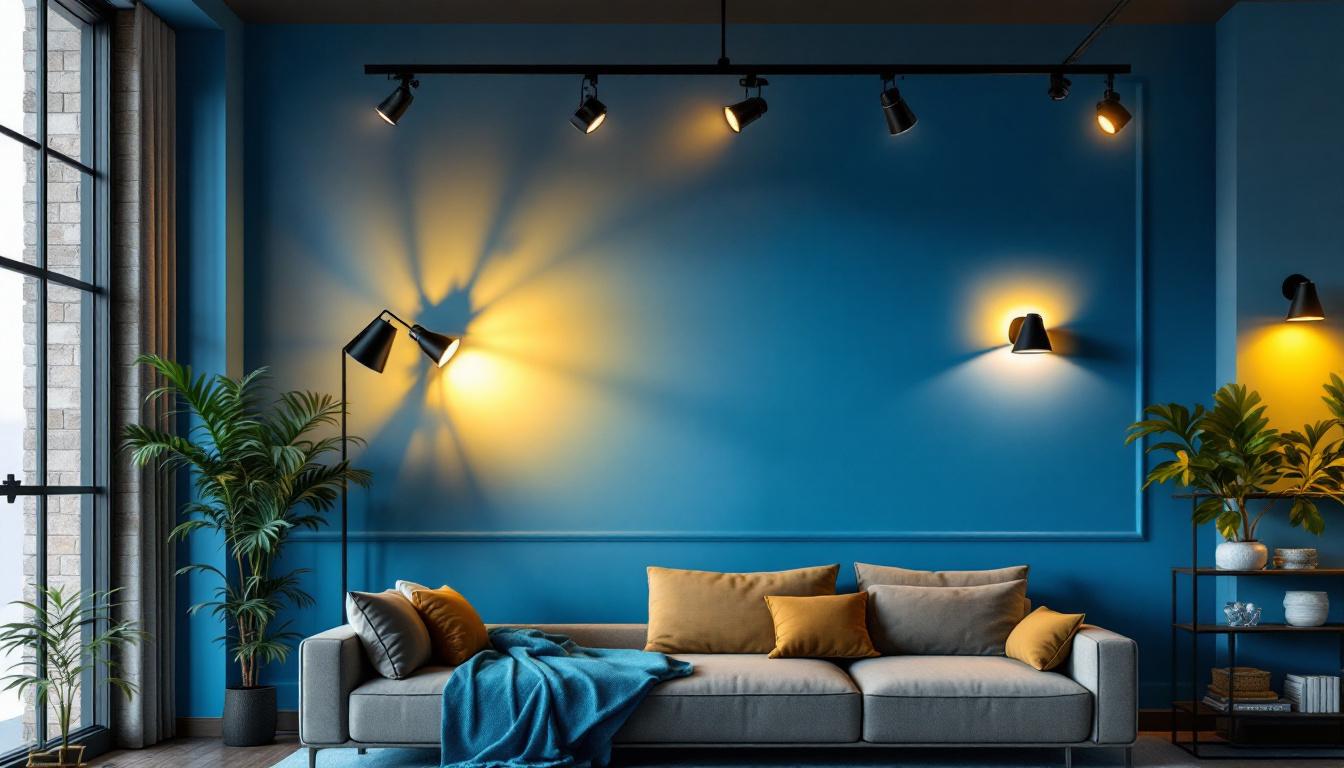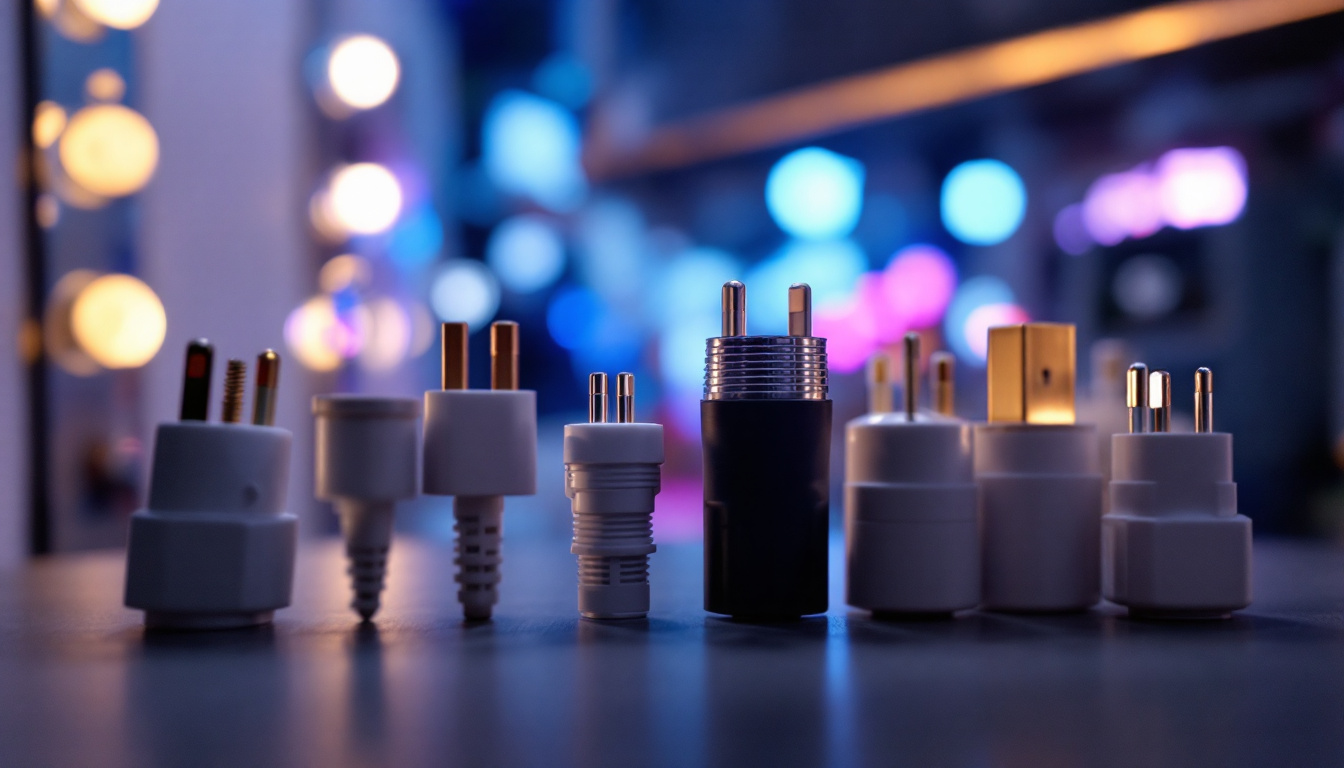
In the world of interior design, lighting plays a crucial role in shaping the ambiance and functionality of a space. For lighting contractors, understanding the nuances of decorative track lighting compared to its alternatives is essential for making informed decisions that meet client needs. This article delves into the advantages and disadvantages of decorative track lighting, explores various alternatives, and provides insights to help contractors choose the best option for their projects.
Decorative track lighting is a versatile and stylish solution that allows for flexibility in illuminating specific areas within a room. It consists of a series of light fixtures mounted on a track, which can be adjusted to direct light where it is needed most. This type of lighting is particularly popular in residential and commercial spaces for its aesthetic appeal and functional benefits.
One of the primary advantages of decorative track lighting is its adaptability. Contractors can easily reposition the fixtures along the track, allowing for changes in the lighting layout without the need for extensive rewiring. This feature is particularly beneficial in spaces that require frequent reconfiguration, such as galleries or retail environments.
Additionally, decorative track lighting offers a wide variety of design options. From sleek and modern to vintage and ornate, there are countless styles available that can complement any interior design theme. This variety allows contractors to tailor their lighting solutions to match the aesthetic preferences of their clients.
While decorative track lighting has many benefits, there are also some considerations that contractors should keep in mind during installation. Proper placement is crucial to avoid creating harsh shadows or overly bright spots. Contractors must assess the space and determine the optimal locations for the track and fixtures to achieve the desired lighting effect.
Moreover, the electrical requirements for track lighting can vary significantly based on the number of fixtures and the wattage of the bulbs used. Contractors should ensure that the existing electrical infrastructure can support the new lighting system, which may involve upgrading circuits or adding additional outlets.
While decorative track lighting is a popular choice, several alternatives can also provide effective lighting solutions. Understanding these options allows contractors to offer clients a range of choices that suit their specific needs and preferences.
Recessed lighting, often referred to as can lighting, is a sleek and unobtrusive option that is installed into the ceiling. This type of lighting provides a clean look and can be used to create a warm and inviting atmosphere. Recessed lights are particularly effective in spaces with low ceilings, where track lighting might feel bulky or overwhelming.
However, one of the drawbacks of recessed lighting is its limited flexibility. Once installed, the fixtures are fixed in place, making it challenging to adjust the lighting direction or intensity. Contractors should weigh the benefits of a clean aesthetic against the need for adaptability when considering this option for their clients.
Pendant lighting is another alternative that offers both functionality and style. These fixtures hang from the ceiling and can serve as focal points in a room. They are available in a wide range of designs, making it easy to find options that align with the overall decor.
One of the key advantages of pendant lighting is its ability to provide targeted illumination. Contractors can install pendants above kitchen islands, dining tables, or workspaces to enhance visibility in those areas. However, like recessed lighting, pendants may lack the flexibility of track lighting, as they are typically fixed in place.
Wall sconces are a versatile lighting option that can add both illumination and decorative flair to a space. These fixtures are mounted on walls and can be used to highlight artwork, architectural features, or simply provide ambient light. Wall sconces come in various styles and sizes, allowing contractors to customize their designs to fit the client’s vision.
While wall sconces can enhance the overall aesthetic of a room, they may not provide sufficient task lighting on their own. Contractors should consider combining sconces with other lighting types, such as recessed or track lighting, to achieve a well-rounded lighting scheme.
When choosing between decorative track lighting and its alternatives, contractors must consider both performance and aesthetics. Each lighting type has its unique strengths and weaknesses that can impact the overall effectiveness of the lighting design.
One of the standout features of decorative track lighting is its ability to distribute light effectively across a space. The adjustable nature of the fixtures allows contractors to direct light precisely where it is needed, enhancing the functionality of the area. This flexibility is particularly valuable in spaces that serve multiple purposes, such as living rooms or multifunctional commercial areas.
In contrast, recessed lighting provides a more uniform light distribution but lacks the adaptability of track lighting. Pendant lighting can offer targeted illumination, but its fixed position may limit its effectiveness in certain scenarios. Wall sconces, while decorative, often require complementary lighting to achieve a balanced effect.
Design integration is another critical consideration when comparing lighting options. Decorative track lighting can seamlessly blend into various design styles, from contemporary to traditional. Its sleek profile and customizable fixtures allow it to complement a wide range of aesthetics, making it a popular choice among designers and contractors alike.
Recessed lighting, while clean and modern, may not provide the same level of visual interest as decorative options. Pendant lighting can serve as a statement piece, but its effectiveness depends on proper placement and scale. Wall sconces can enhance design elements but may require careful consideration to avoid overwhelming the space.
Cost is always a significant factor when selecting lighting options for a project. Decorative track lighting can vary widely in price, depending on the quality of the fixtures and the complexity of the installation. While it may require a higher initial investment, the long-term benefits of flexibility and adaptability can justify the cost for many clients.
When budgeting for decorative track lighting, contractors should consider not only the cost of the fixtures but also the installation expenses. Depending on the complexity of the track layout and the electrical requirements, installation costs can add up. It is essential to provide clients with a comprehensive estimate that includes all aspects of the project to avoid surprises later on.
Additionally, contractors should keep in mind that decorative track lighting often requires specific bulbs, which can also impact the overall budget. Energy-efficient options, such as LED bulbs, may have a higher upfront cost but can lead to significant savings in energy bills over time.
When comparing costs with alternatives like recessed lighting, pendant lighting, and wall sconces, it’s important to assess the total value each option provides. Recessed lighting may have lower installation costs but could lack the versatility that clients desire. Pendant lighting can be more affordable upfront but may require multiple fixtures to achieve the desired effect.
Wall sconces, while often less expensive, may necessitate additional lighting sources to create a well-lit environment. Contractors should evaluate the overall lighting plan and client needs to determine the most cost-effective solution for each project.
Understanding client preferences and current design trends is vital for lighting contractors. As the demand for unique and personalized spaces continues to grow, clients are increasingly seeking lighting solutions that reflect their individual styles.
Clients today are more involved in the design process than ever before. They want lighting that not only serves a functional purpose but also enhances the aesthetic appeal of their spaces. Decorative track lighting, with its customizable fixtures and adjustable layout, allows for a high degree of personalization that many clients appreciate.
Contractors should engage clients in discussions about their preferences and vision for the space. This collaboration can lead to more satisfying results and help build strong client relationships. By offering a range of lighting options, including decorative track lighting and its alternatives, contractors can cater to diverse tastes and requirements.
Keeping up with design trends is essential for lighting contractors looking to remain competitive in the industry. Currently, there is a growing emphasis on sustainable and energy-efficient lighting solutions. Decorative track lighting that incorporates LED technology not only meets these demands but also appeals to eco-conscious clients.
Additionally, the trend toward open-concept living spaces has increased the popularity of track lighting, as it can effectively illuminate large areas without overwhelming the design. By staying informed about emerging trends, contractors can position themselves as knowledgeable advisors to their clients, helping them make informed decisions about their lighting choices.
In conclusion, the choice between decorative track lighting and its alternatives ultimately depends on the specific needs and preferences of the client, as well as the unique characteristics of the space. Decorative track lighting offers unparalleled flexibility and a wide variety of design options, making it a strong contender for many projects.
However, alternatives such as recessed lighting, pendant lighting, and wall sconces also have their merits and can be effective in different contexts. By carefully considering factors such as performance, aesthetics, cost, and client preferences, lighting contractors can make informed choices that enhance their projects and satisfy client expectations.
As the lighting industry continues to evolve, contractors must remain adaptable and open to new ideas. By embracing both decorative track lighting and its alternatives, they can provide comprehensive lighting solutions that illuminate spaces beautifully and efficiently.
Ready to elevate your lighting projects with the perfect blend of style, performance, and value? Look no further than LumenWholesale for a vast selection of top-quality, spec-grade lighting products. Our commitment to unbeatable wholesale prices means you can access superior lighting solutions without the inflated markups often found at local distributors. With free shipping on bulk orders, LumenWholesale ensures you get the premium lighting your projects deserve at the best price, hassle-free. Don’t compromise on quality or cost—discover the ideal lighting at the best value today and light up your client’s space with confidence and convenience.

Discover the latest innovations in smart home switches that are transforming the lighting industry.

Discover how mercury vapor light fixtures can streamline projects for lighting contractors.

Discover how LED bulbs are revolutionizing the lighting industry by transforming plant growth.

Discover the essential role dryer plugs play in lighting installations.